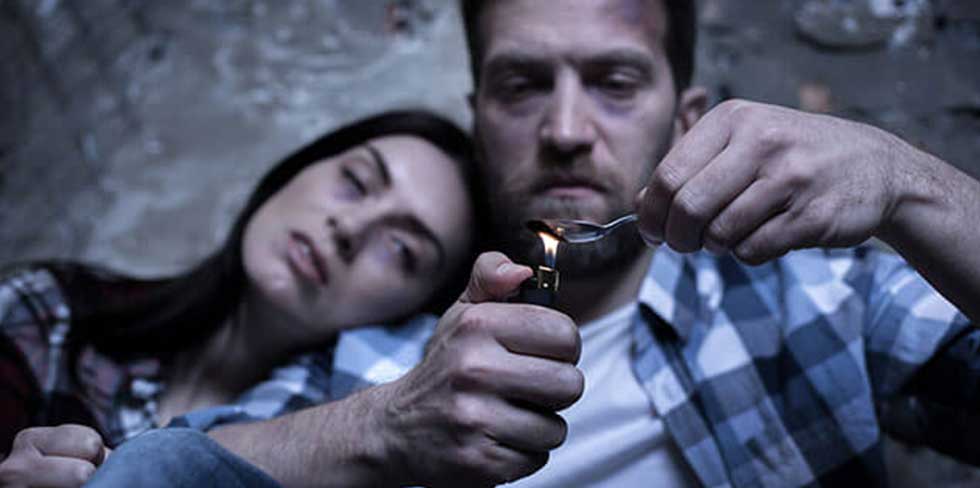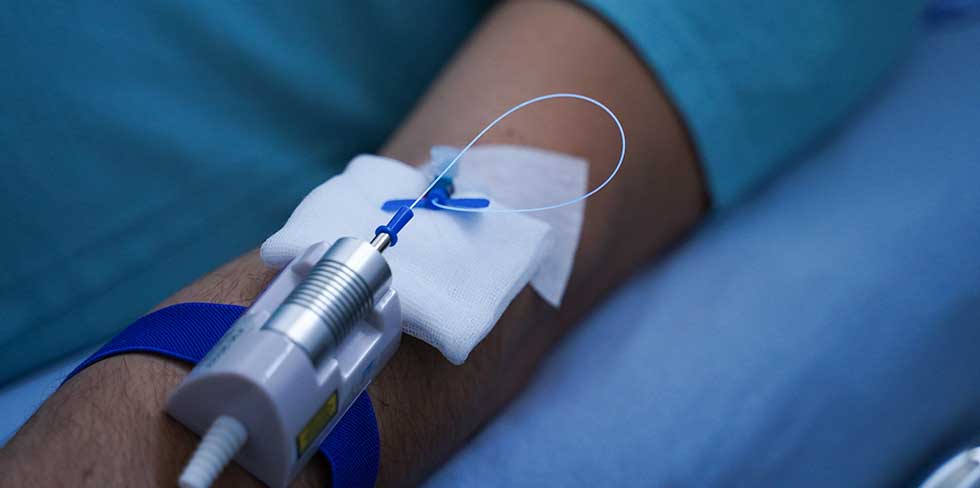Heroin addiction, as defined by the World Health Organization (WHO), is classified as a disorder caused by the use of psychoactive substances. WHO describes addiction as a chronic condition marked by a compulsive need to use a substance, a loss of control over its consumption, and harmful consequences for both the individual and society.
Key characteristics of heroin addiction include:
According to the WHO, heroin addiction is a complex disorder influenced by biological, psychological, and social factors. Treatment typically includes a combination of medical interventions (such as methadone or buprenorphine therapy), psychotherapy, and social support.

Heroin (diacetylmorphine) is an opioid analgesic derived from the Asian opium poppy plant and belongs to the group of opiates. However, pure heroin does not exist naturally; it is typically found on the market as a white crystalline powder. While pure heroin is similar in colour to cocaine, it is rarely sold in its pure form. Instead, its appearance can vary, ranging from light brown to reddish shades.
Heroin is a synthetic derivative of morphine. Its potent and fast-acting effects are primarily due to its high fat solubility, which enables it to quickly cross the blood-brain barrier and reach the brain.
Effective intervention requires a multidisciplinary approach involving healthcare professionals, psychotherapists, and the wider community to support rehabilitation and reintegration into society.
Heroin causes both physical and psychological dependence. It is one of the most addictive drugs, rapidly leading to structural changes in the brain. Therefore, it is crucial to tackle heroin addiction at its root and begin treatment as early as possible.
The first use of heroin triggers an intense rush of pleasure, euphoria, and a sense of well-being. These powerful sensations create a strong desire to use the drug again, rapidly leading to tolerance and addiction.
Each method of use rapidly crosses the blood-brain barrier.
Once heroin reaches the brain, it is converted back into morphine, which then binds to opioid receptors located throughout the brain and body. These receptors regulate pain and the reward system, which is why heroin induces pleasurable feelings and alleviates pain. Chronic and prolonged use of heroin alters both the structure and function of the brain, leading to physical and psychological dependence on the drug.
Physical dependence on heroin occurs when a person develops a strong need to continue using the drug to avoid the unpleasant, and often extremely painful, symptoms of withdrawal. This addiction develops as a result of long-term use, which causes changes in brain chemistry and alters how the body functions. When heroin use is stopped, the body reacts with a range of symptoms, including intense muscle pain, insomnia, severe anxiety, sweating, nausea, vomiting, and tremors. Often, an addict uses heroin not to experience euphoria but to alleviate these withdrawal symptoms, making the withdrawal process both physically and mentally exhausting.
Psychological addiction to heroin refers to a condition in which a person develops a deep belief that they cannot function normally without the drug. This is the result of an emotional and mental attachment to the effects of heroin, such as feelings of calm, happiness, or an escape from life’s problems. This type of addiction often involves obsessive thoughts about obtaining and using heroin, fear of facing daily challenges without it, and feelings of emptiness or meaninglessness when not using it. Mental addiction can be just as, if not more, difficult to overcome than physical addiction, as it requires significant changes in mindset, lifestyle, and emotional stability.
The combination of both physical and psychological addiction makes heroin one of the most difficult drugs to quit, requiring a holistic treatment approach that includes medical support, psychological care, and social reintegration.
The treatment of both the physical and psychological aspects of heroin addiction in a reputable treatment centre is the only effective way for individuals to break free from the drug and leave it behind for good.
A common question is: how can you recognise a heroin addict, especially during a crisis? In other words, what are the signs of heroin addiction?
The symptoms of heroin addiction or abuse can vary from person to person, depending on factors such as genetics, as well as the amount and frequency of heroin use.
The most common symptoms of heroin addiction include:
Research has shown that several factors influence whether an individual is likely to become addicted to heroin.
While genetic factors alone do not cause heroin addiction, they can influence the likelihood of developing an addiction once a person starts using the drug. Individuals with a family history of addiction, particularly among close relatives, are more likely to become addicted to heroin themselves.
The effects of heroin, particularly with long-term use, are extremely harmful to the addict. These negative effects of heroin can be broadly categorized into short-term and long-term consequences.
Short-term negative effects of heroin:
The long-term effects of heroin result from the toxic impact of chronic use. These side effects affect multiple systems in the addict’s body:
Additionally, when multiple heroin users share intravenous equipment (such as needles), the risk of infectious diseases like HIV and hepatitis increases. The medical complications resulting from these infections can lead to cancer, organ failure, and even death. These are clear indicators of the critical importance of heroin treatment to prevent such consequences.
Heroin addiction can also lead to the development of various psychological issues. In addition to depression and anxiety, this may include conditions such as schizophrenia, bipolar disorder, post-traumatic stress disorder, personality disorders, and others.
The symptoms of withdrawal can begin to appear just a few hours after the cessation of long-term use. These symptoms include:
Heroin addiction is a serious issue that deeply affects both the body and the individual’s mental state. Due to the intense impact this substance has on the physical and psychological systems, it is rare for someone addicted to heroin to recognise the problem on their own and find the strength to face the challenges of withdrawal. In these cases, the support of family and friends is crucial, especially in the early stages of treatment, when it is vital for the addict to realise that recovery is possible, no matter how challenging the process may seem.
The first step in treating heroin addiction is motivating the addict to seek help and believe in the recovery process. Those close to the individual play a crucial role in this, as they can help the addict recognise the harm caused by the drug and understand that there is a way out of the cycle of addiction. Once the addict decides to begin treatment, professional help and medical support become essential for achieving lasting change.
Medical treatment for heroin addiction typically lasts 14 days, depending on the individual needs of the patient. During this time, our team of experts provides personalised care and support, facilitating a smooth detoxification process and stabilising the body.
Medical detoxification is a crucial first step in the treatment of heroin addiction. At the MedTiM clinic, this process is carried out under the careful supervision of experienced professionals, ensuring a safe and controlled removal of heroin from the body. Using advanced, world-renowned methods, we facilitate a painless detoxification process, making it more comfortable for patients and easing withdrawal symptoms.
Heroin addiction is not a sign of weakness, but a complex illness that requires professional and careful treatment. Detoxification is not just a physical process of cleansing the body – it marks a key turning point, the first step towards psychological and emotional healing. Our team of experts offers support and security throughout this journey to a new, addiction-free life.

Heroin addiction takes a heavy toll on both the body and mind, leaving lasting physical and psychological effects. Detoxification helps the body rid itself of physical dependence, providing a foundation for addressing the psychological aspects of the illness. When done properly, detoxification significantly increases the chances of a successful and lasting recovery, enabling the patient to take a vital step towards a healthier, more fulfilling life.
The fear of withdrawal symptoms often delays the start of detoxification. While the process can be challenging, professional medical supervision can significantly alleviate these symptoms. Thanks to modern therapies and medications, discomfort is minimised, allowing patients to undergo detoxification as painlessly and comfortably as possible. It is important to remember that any fear can be overcome with professional support and guidance.
Heroin detox is not the end of the struggle, but the beginning of recovery. Once the body is cleared of heroin, it creates the opportunity to focus on other aspects of healing – emotional, mental, and social. This is a crucial moment to build a life on a healthy and stable foundation.
Heroin addiction profoundly alters the brain’s chemical processes, and pharmacotherapy helps gradually restore balance. This treatment reduces the risk of relapse and creates the necessary conditions to focus on the next stages of recovery, such as psychotherapy, the development of healthy habits, and the restoration of life values.
Prejudices against pharmacotherapy are common, including the misconception that “drug treatment simply replaces one addiction with another.” However, when used correctly, these medications do not cause euphoria or addiction. Their purpose is to manage symptoms and eliminate the need for heroin, thereby providing stability during the recovery process.
Pharmacotherapy is an integral part of a broader, comprehensive treatment approach. When combined with psychotherapy, family support, and personal development work, it offers a safe and effective path to recovery. With professional guidance, it is possible to successfully overcome both the physical and emotional challenges that addiction presents.
Heroin addiction often stems from deep emotional pain, trauma, or a sense of emptiness. Psychotherapy provides a safe space to explore the underlying causes of addiction and confront the challenges of the recovery process. This approach helps individuals understand the thoughts, emotions, and behavioural patterns that sustain the cycle of addiction, thereby paving the way for meaningful change and lasting recovery.
1. Cognitive-Behavioral Therapy (CBT) – CBT helps identify and change negative thinking and behavioural patterns that contribute to heroin use. This therapy provides practical strategies for managing cravings, stress, and everyday challenges without turning to drugs.
2. Motivational Counseling – This therapy focuses on enhancing internal motivation for change. Through conversations with a therapist, the goals, values, and reasons that drive the decision to leave heroin behind are explored and clarified.
3. Family Therapy – Addiction impacts not just the individual, but also their family. Family therapy helps repair damaged relationships, strengthen mutual support, and foster a healthy family environment that encourages recovery.
Heroin blockers are medications that prevent the effects of heroin and other opiates on the brain. The most commonly used blocker is naltrexone. It works by blocking the euphoric effects of heroin in the brain, which reduces the risk of relapse and supports the ongoing recovery process.
For individuals with long-term heroin addiction, transitioning to a drug-free life can be a significant challenge. Substitution therapy involves the use of medications such as methadone or buprenorphine to reduce withdrawal symptoms and cravings for heroin. These medications help maintain stability and allow individuals to focus on further recovery processes without experiencing the euphoric effects associated with heroin use. Substitution therapy is an important step towards achieving a more stable and healthier lifestyle.

Heroin addiction not only impacts mental health and behavior, but it can also cause significant physical damage. Long-term opiate use often impairs the function of vital organs such as the liver, heart, and immune system. Therefore, alongside addiction treatment, it is crucial to focus on physical recovery. Programs aimed at rehabilitating somatic disorders provide essential support in restoring overall health, which is a key component of the complete recovery process.
Programs designed to rehabilitate the effects of long-term opiate use are structured to help diagnose, treat, and restore the body’s functions. Special emphasis is placed on critical aspects of physical health.
An integrated approach combines modern medical procedures with individually tailored treatment plans. In addition to addressing specific disorders, various therapeutic methods are employed, such as hyperbaric oxygen therapy, sauna, massages, and lymphatic drainage. These therapies aid in regeneration and help restore energy. This holistic approach facilitates a more efficient and accelerated recovery of the entire body.
Once the body eliminates the toxic effects of heroin and begins to recover, a solid foundation is established for lasting stability and mental healing. Addressing somatic disorders not only enhances the quality of life but also boosts the chances of long-term abstinence and a healthier future.
At the MedTiM clinic, we offer innovative methods for the treatment of heroin addiction. Our clinic provides painless detoxification using world-renowned techniques that enable quick and effective cleansing of the body from toxic substances, while also eliminating physical addiction.
This comprehensive approach not only offers the essential professional support and stability but also fosters the development of healthy lifestyle habits and emotional well-being. By integrating a variety of therapies within a supportive environment, patients are given the opportunity to regain balance in their lives, preparing them for a future free from addiction.